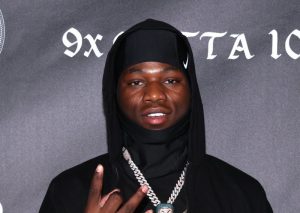Getty Image
South African singer Tyla has been one of the biggest breakout artists of 2023. Her song “Water” went from TikTok sensation to Grammy nominations, raising the 21-year-old Johannesburg native’s profile considerably in a relatively short time. Naturally, fans want to know more about her; however, as they’ve learned more, they may have developed some new questions, particularly when they find out she does not identify as “Black.”
No, this isn’t a Mean Girls situation. It’s actually much more nuanced than that — a reminder that the United States isn’t the center of the universe and that race is a constructed concept, and not a very useful or even logical one to begin with.
In Tyla’s native South Africa, race is viewed differently than it is in the States. Whereas in America, race is considered more of a binary (which has become more layered in recent years as groups from Latin America and Asia have grown and indigenous groups have received more recognition), South African views of race are likewise informed by apartheid but also by a more European view.
While indigenous South African groups would be considered Black and descendants of Britsh and Dutch colonists are white, a third group, “Coloured,” refers to South African citizens of mixed ethnicity, often descended from interracial couplings between native Black Africans and white settlers. In addition, people of South Asian descent were grouped into this category until the end of apartheid.
The Population Registration Act of 1950 created these categories based on criteria such as the person’s head hair (as determined by the “pencil test”), skin color, facial features, home language, employment, socioeconomic status, and even their home geography and eating and drinking habits. Eventually, the act was amended to create various subgroups; the act was repealed in 1991 with the end of apartheid, but the thinking that it created remains ingrained in the culture to this day.
So, for Tyla, identifying as “coloured” is both a function of her heritage and of the politics of her homeland. While “colored” was at one point also used in the United States, it referred almost exclusively to people of West African descent, usually the descendants of enslaved peoples. That term was eventually phased out in favor of “African-American” or more broadly, “Black,” but this sort of classification is unique to the United States. As our popular culture becomes more global, though, getting used to learning these other viewpoints will be essential to remaining literate and understanding the art that bonds us all together.



